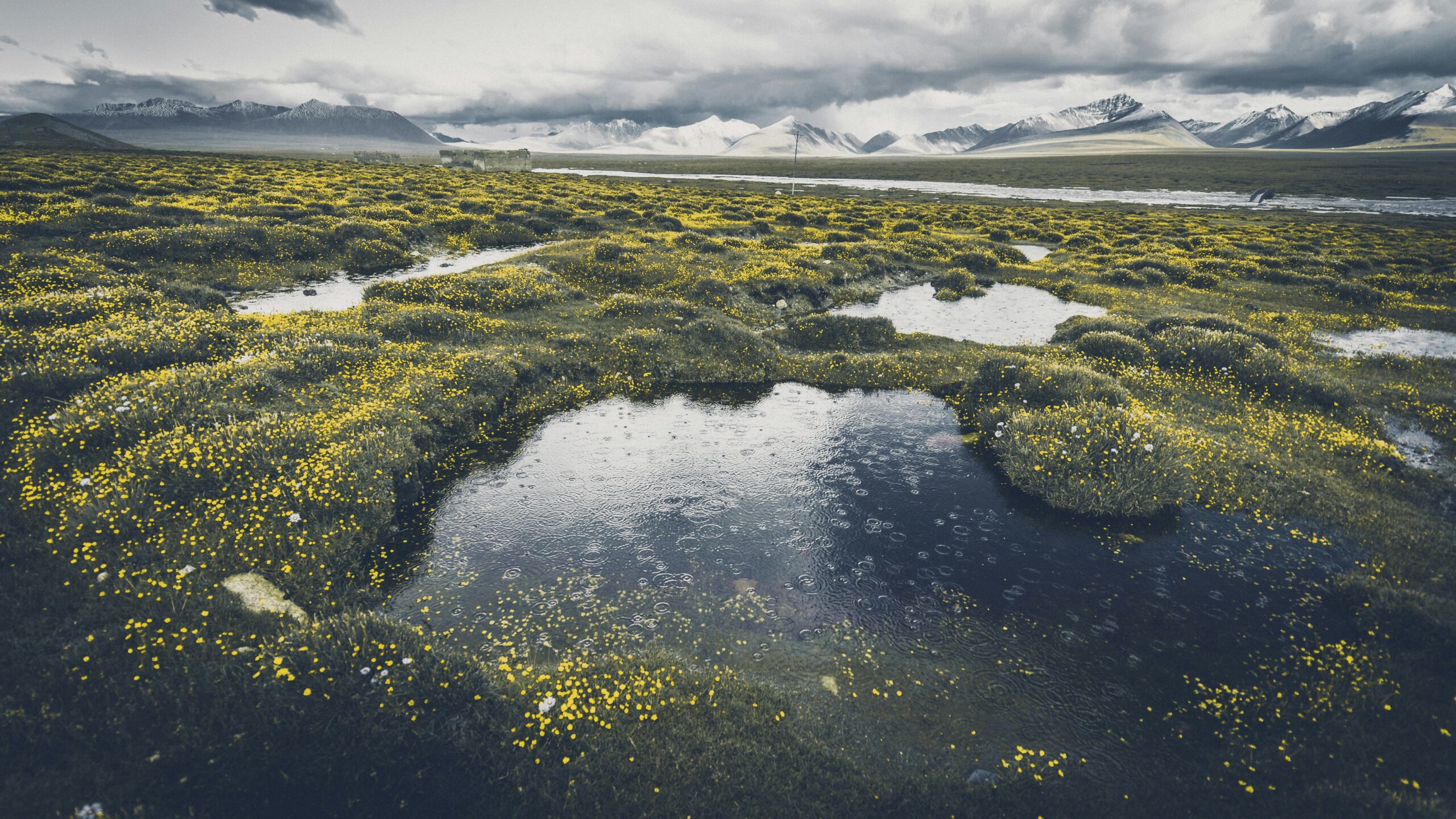Imagine you’re on an exciting outdoor adventure, exploring nature’s wonders and capturing breathtaking wildlife moments. Now, picture yourself caught in a sudden downpour, fearing for the safety of your spotting scope. In this article, we will discuss the significance of waterproofing in a spotting scope, revealing how this crucial feature protects your investment, ensures clear visibility in unpredictable weather conditions, and enhances your overall outdoor experience. Don’t let rain showers dampen your spirit of exploration – read on to discover the importance of waterproofing in a spotting scope.
Understanding Spotting Scopes
Definition of a spotting scope
A spotting scope is a compact and portable optical instrument designed for viewing distant objects with clarity. It is essentially a telescopic device that provides high magnification, making it ideal for activities such as birdwatching, wildlife observation, hunting, and target shooting. Unlike binoculars, spotting scopes offer higher magnification and are often used on a tripod for better stability.
Various uses of spotting scopes
Spotting scopes have a wide range of applications and are popular among outdoor enthusiasts and professionals alike. Birdwatchers, for example, use spotting scopes to observe and identify birds from a distance, allowing them to spot rare or elusive species. Spotting scopes are also commonly used in hunting as they provide a clear and detailed view of game animals from a distance, helping hunters make accurate shots. Additionally, spotting scopes are utilized in shooting sports and astronomy, where precise clarity and magnification are paramount.
Features of standard spotting scopes
Standard spotting scopes typically come with several key features that enhance their performance and usability. These features include variable magnification, typically ranging from 15x to 60x, allowing users to adjust the level of zoom based on their needs. Spotting scopes also have objective lenses that range in size from 50mm to 100mm, enabling maximum light transmission for clear and bright images. Furthermore, most spotting scopes are equipped with an angled or straight eyepiece, which allows for comfortable viewing in different positions. Finally, many spotting scopes offer a built-in tripod mount for added stability during prolonged observation sessions.
Spotting Scope in Different Weather
Importance of weather resistance in spotting scopes
Weather resistance is a crucial factor when it comes to choosing a spotting scope. The ability to withstand different weather conditions ensures that the scope remains functional and reliable, regardless of the environment. Spotting scopes are commonly used outdoors, where they may be exposed to rain, snow, dust, and other environmental elements. A spotting scope with effective weather resistance capabilities is essential to protect the internal components from moisture, fogging, and damage, while also allowing for optimal performance in various weather conditions.
Impact of wet weather on spotting scopes
Spotting scopes that are not weather resistant can be highly vulnerable to wet weather conditions. Moisture from rain or snow can seep into the optics, causing fogging or water damage. This can significantly impair the clarity and functionality of the spotting scope, rendering it ineffective for observation purposes. Additionally, exposure to moisture can lead to the growth of mold or fungi within the scope, further deteriorating its performance and potentially causing long-term damage.
Spotting scope performance in different weather conditions
A spotting scope with excellent weather resistance capabilities ensures optimal performance in a variety of weather conditions. In wet weather, the sealed construction and waterproofing of the scope prevent moisture from entering the internal components, maintaining clear and fog-free viewing. Similarly, in dusty environments, a weather-resistant spotting scope prevents dust particles from settling on the optics, preserving image quality. By ensuring reliable performance in different weather conditions, a spotting scope with effective weather resistance enhances the overall experience of the user and allows for uninterrupted observation.

Understanding Waterproofing in Spotting Scopes
Definition of waterproofing
Waterproofing refers to the process of making a device or product resistant to water penetration. In the context of spotting scopes, waterproofing involves the implementation of seals and barriers that prevent water from entering the scope’s internal components, such as the lenses and prisms. Waterproofing ensures that the spotting scope remains fully functional and protected even when exposed to wet conditions, providing peace of mind to the user and extending the lifespan of the device.
How waterproofing in spotting scopes works
Spotting scopes employ various methods to achieve waterproofing. One common technique is the use of O-rings, which are rubberized gaskets placed at critical points in the scope’s construction. These O-rings create a watertight seal that prevents water from entering the scope. Another method involves nitrogen or argon gas purging, where the internal air is replaced with either nitrogen or argon gas. This process eliminates moisture and helps maintain consistent performance, especially in humid environments. Additionally, some spotting scopes feature a rubberized coating that acts as an extra barrier against water infiltration.
Different levels of waterproofing in spotting scopes
Spotting scopes are typically categorized into different levels of waterproofing based on their ability to withstand water penetration. The most basic level is water-resistant, which means the scope can resist some water exposure but may not be fully waterproof. The next level is water-resistant with an IPX-4 rating, which offers a higher level of protection against water splashes. A step further is the waterproof designation, indicating that the spotting scope can be submerged in water up to a specified depth without any adverse effects. The highest level is the fully submersible rating, which guarantees complete waterproofing even at greater depths.
Importance of Waterproofing in Spotting Scopes
Impact of water leakage on spotting scopes
Water leakage into a spotting scope can have severe consequences on its functionality and performance. When water enters the internal components, it can cause fogging, which obstructs the view and diminishes image clarity. Additionally, water can damage delicate optical elements, leading to permanent loss of functionality. The presence of water can corrode metal parts, degrade coatings, and compromise the integrity of the spotting scope as a whole. Moreover, prolonged exposure to moisture can result in mold or fungal growth, further reducing the lifespan and usability of the device.
Role of waterproofing in enhancing durability
Waterproofing plays a crucial role in prolonging the lifespan of a spotting scope. By preventing water from entering the scope, waterproofing protects the delicate optical components and internal mechanisms from damage. The seals and barriers used in the waterproofing process create a protective barrier against moisture, ensuring that the scope remains fully functional even in wet environments. By enhancing the durability of the spotting scope, waterproofing eliminates the need for frequent repairs and replacements, saving both time and money for the user.
Contribution of waterproofing to better viewing experience
Waterproofing significantly contributes to a better viewing experience when using a spotting scope. A waterproof scope allows users to confidently observe in various weather conditions, including rain, snow, and fog, without worrying about water damage or fogging. With a clear and uninterrupted view, users can fully immerse themselves in their observation activities, whether it’s wildlife watching, birdwatching, or astronomical exploration. The peace of mind that comes with a waterproof spotting scope enhances the overall enjoyment and satisfaction of the user.

Common Waterproofing Techniques
Usage of O-rings for waterproof sealing
O-rings are commonly used in spotting scopes to create a watertight seal and protect against water infiltration. These rubberized gaskets are strategically placed in areas where moisture could potentially enter, such as around the eyepiece, focus wheel, and objective lens. O-rings effectively block water from reaching the internal components of the spotting scope, ensuring its waterproofing capabilities. Regular inspection and replacement of O-rings, if necessary, are important to maintain the effectiveness of this sealing mechanism.
Nitrogen or argon gas purging
Another waterproofing technique employed in spotting scopes is the process of nitrogen or argon gas purging. This method involves replacing the air inside the scope with either nitrogen or argon gas, which eliminates moisture and prevents fogging. Nitrogen and argon gases have low moisture content, making them ideal for maintaining clear optics and preventing the growth of mold or fungi. Gas purging also enhances the lifespan of the internal components by minimizing the risk of corrosion due to moisture exposure.
Role of rubberized coating
Many spotting scopes feature a rubberized coating on the exterior surface, which serves multiple purposes, including waterproofing. The rubber coating acts as an additional layer of protection, preventing water from seeping into the internal components. This coating also provides a better grip and enhances shock absorption, making the spotting scope more durable and resistant to accidental drops or impacts. The rubberized coating further enhances the overall handling and usability of the spotting scope in various weather conditions.
Assessing Waterproof Rating in Spotting Scopes
Understanding spotting scope waterproof ratings
Spotting scopes are often assigned specific waterproof ratings that indicate their ability to resist water penetration. These ratings are typically represented by an IPX (Ingress Protection) code followed by a number. The IPX code specifies the scope’s resistance to water in different scenarios. The first digit represents protection against solid objects, while the second digit indicates protection against liquids. In the case of spotting scopes, the second digit, or the liquid protection rating, is the most relevant. The higher the number, the greater the level of water resistance.
How to check for spotting scope waterproof rating
To determine the waterproof rating of a spotting scope, it is important to refer to the manufacturer’s specifications or product descriptions. The waterproof rating is usually clearly mentioned, indicating the scope’s level of resistance to water. Additionally, it is advisable to check for any specific certifications relevant to waterproofing, such as the IPX rating. Manufacturers often provide detailed information regarding the specific tests and conditions that their spotting scopes have undergone to achieve the specified waterproof rating.
Possible misleading information in waterproof ratings
It is essential to be cautious when interpreting waterproof ratings as certain information may be misleading or need further clarification. Some manufacturers may claim a certain level of waterproofing without providing specific details or certifications. In such cases, it is advisable to conduct further research and seek reliable reviews or expert opinions to verify the actual waterproof capabilities of the spotting scope. Additionally, it is crucial to understand that even the highest waterproof rating does not guarantee complete water resistance under all conditions, as external factors like user error or damage can affect the performance.

Choosing a Spotting Scope based on Waterproofing
Factors to consider regarding waterproofing
When selecting a spotting scope, it is important to consider several factors related to waterproofing. The intended use of the spotting scope should be taken into account, as certain activities may involve greater exposure to water or wet conditions. Additionally, the expected weather conditions in the area of use should be considered. If the spotting scope will primarily be used in humid or rainy environments, a higher waterproof rating or even full submersion capability may be necessary. Budget and other desired features should also be weighed alongside the waterproofing capabilities of the spotting scope.
How to choose between different levels of waterproofing
The appropriate level of waterproofing for a spotting scope largely depends on the individual’s needs and preferences. Evaluating the expected environmental conditions, such as rainy or snowy climates, will assist in determining the necessary waterproof rating. If the spotting scope will be used in extremely wet conditions, it may be wise to opt for a fully waterproof or submersible scope. However, for occasional exposure to rain or splashes, a water-resistant or IPX-4 rated spotting scope might suffice. Ultimately, balancing the level of waterproofing with other desired features and budget considerations will help make an informed decision.
Price consideration regarding waterproof spotting Scopes
Spotting scopes with higher levels of waterproofing and greater durability may come with a higher price tag. The additional technology, materials, and manufacturing processes involved in creating a waterproof spotting scope often contribute to its overall cost. However, it is essential to weigh the potential benefits and long-term savings against the initial investment. While more budget-friendly spotting scopes may offer some level of water resistance, the enhanced durability and reliability provided by a higher quality, waterproof scope can significantly outweigh the price difference.
Maintaining the Waterproof Feature in Spotting Scopes
Routine maintenance for maintaining waterproofing
To ensure the longevity and effectiveness of the waterproofing in a spotting scope, regular maintenance is essential. After each use, it is important to clean the external surfaces of the scope using a soft cloth or brush to remove any dirt or debris. If the scope becomes wet, it should be thoroughly dried before storage to prevent moisture buildup. Additionally, periodic inspection of the O-rings and other sealing mechanisms should be carried out to check for any signs of wear or damage. Replacing worn or damaged O-rings in a timely manner will help maintain the waterproof feature of the spotting scope.
Handling damages or issues in waterproof seals
In the event of damage to the waterproof seals or any other issues related to waterproofing, it is best to contact the manufacturer or a professional repair service. Attempting to repair the seals oneself can potentially result in further damage or complete loss of waterproofing. Manufacturers or authorized repair centers have the knowledge and expertise to assess and address any problems with the waterproofing, ensuring that the spotting scope remains fully protected against water infiltration.
Storage and routine care to conserve waterproofing
Proper storage and routine care play significant roles in conserving the waterproofing capabilities of a spotting scope. When not in use, the scope should be stored in a dry and dust-free environment to avoid moisture accumulation and potential damage. It is advisable to use the provided dust caps or covers to protect the objective lens and eyepiece from dust, water, and other contaminants. Additionally, the spotting scope should be stored in a well-ventilated area to prevent the growth of mold or fungi. Regularly inspecting and cleaning the scope as a part of routine care will help maintain its waterproofing capabilities.
Common Misconceptions about Waterproofing in Spotting Scopes
Confusion between waterproof and water-resistant
One common misconception is the confusion between the terms waterproof and water-resistant. While these terms are often used interchangeably, there is a fundamental difference between the two. Waterproof denotes a higher level of protection, indicating that the spotting scope is impervious to water penetration even when fully submerged. On the other hand, water-resistant implies a lower level of protection, suggesting that the scope can resist some water exposure but may not be completely impervious to it. It is important to understand these distinctions and choose a spotting scope based on the level of water resistance required for the intended use.
Misunderstanding about different levels of waterproofing
There can also be a misunderstanding regarding the different levels of waterproofing in spotting scopes. Some individuals may assume that all waterproof scopes are equal in their capabilities and fail to consider the specific waterproof rating. However, as discussed earlier, spotting scopes can have varying levels of waterproofing, ranging from simply being water-resistant to being fully submersible. It is crucial to assess the waterproof rating of a spotting scope and match it with the expected environmental conditions to ensure optimal performance and protection against water damage.
Expectations vs reality of spotting scope waterproofing
Another misconception regarding waterproofing in spotting scopes relates to unrealistic expectations. While waterproofing provides excellent protection against water damage, it does not make the spotting scope indestructible or immune to all external factors. Damages from dropping, impacts, or rough handling can still occur and potentially compromise the performance or integrity of the spotting scope, even if it has a high waterproof rating. Understanding the limitations of waterproofing and exercising proper care and handling are vital to maintain the spotting scope’s functionality and longevity.
Case Study: Impact of Waterproofing in Spotting Scopes
Scenarios without waterproofing
To illustrate the importance of waterproofing, let’s consider a couple of scenarios without the presence of effective waterproofing in spotting scopes. In the first scenario, a birdwatcher using a non-waterproof spotting scope gets caught in a sudden rainstorm. Water quickly seeps into the scope, causing fogging and obscuring the view. The birdwatcher misses the opportunity to observe rare bird species due to reduced visibility. In another scenario, a wildlife photographer using a spotting scope without proper waterproofing accidentally drops the scope into a shallow pond. The scope suffers extensive damage, rendering it inoperable and resulting in a significant financial loss.
Potential damages caused by lack of waterproofing
The absence or inadequate waterproofing in a spotting scope can lead to various damages. Exposure to moisture can result in fogging, making it difficult to see through the scope and diminishing image clarity. Internal components may suffer corrosion or damage, leading to malfunctions and decreased performance. Water can also seep into delicate optical elements, causing irreversible damage and necessitating costly repairs or replacements. Moreover, the growth of mold or fungi due to moisture accumulation can render the spotting scope unsanitary and further degrade its functionality over time.
Benefits observed due to the presence of waterproofing
On the other hand, spotting scopes with effective waterproofing offer significant benefits, even in challenging conditions. A birdwatcher using a fully waterproof spotting scope can confidently continue observing birds during a light drizzle without any concern for water damage or diminished clarity. A hunter with a water-resistant spotting scope can maintain unobstructed visibility in wet environments, ensuring precise targeting and successful shots. Waterproofing also provides peace of mind, allowing users to explore and enjoy outdoor activities without worrying about the potential consequences of moisture exposure.
In conclusion, waterproofing is of utmost importance in a spotting scope. Its role in protecting the internal components, enhancing durability, and contributing to a better viewing experience cannot be overstated. With proper waterproofing techniques such as O-rings, gas purging, and rubberized coatings, spotting scopes can withstand various weather conditions and perform optimally. Understanding waterproof ratings, considering environmental factors, and practicing routine maintenance are essential in choosing and maintaining a waterproof spotting scope. By prioritizing waterproofing, users can confidently engage in their outdoor pursuits, knowing that their spotting scope will withstand the test of time and keep delivering exceptional performance.
